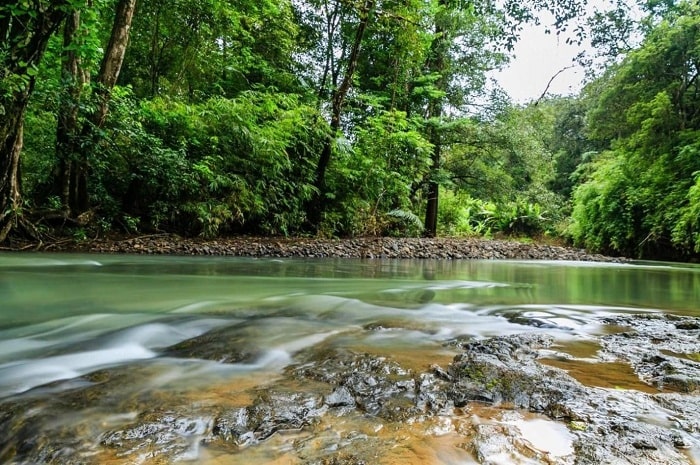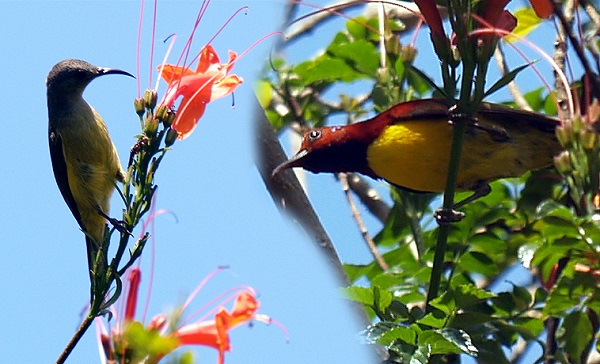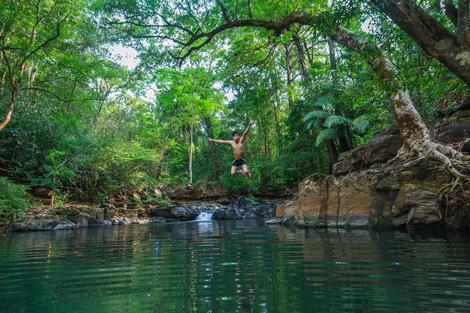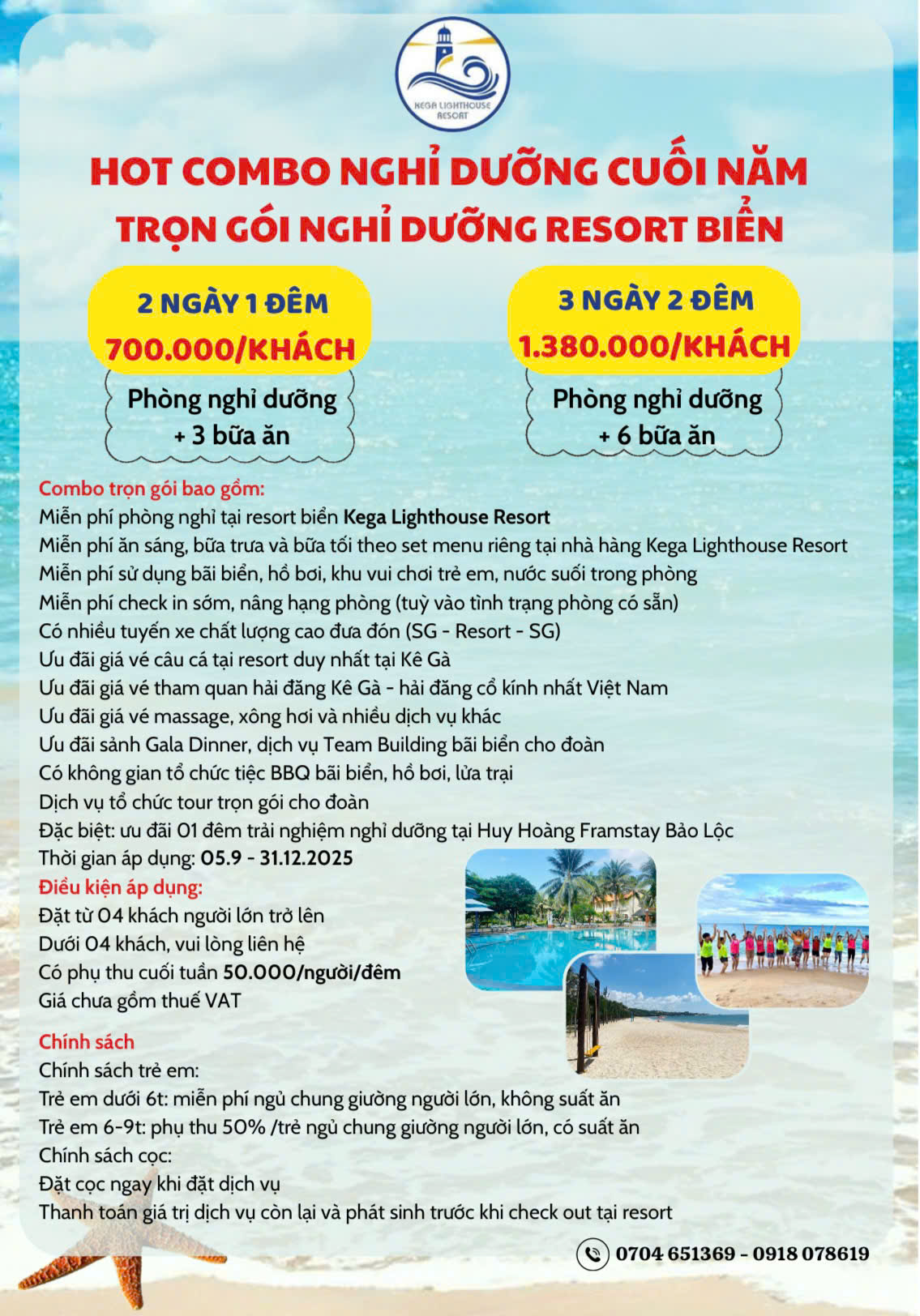Hotline: 091 807 8619
Friday, 28/02/2020, 11:21 GMT+7
Phuoc Binh National Park
The park is located in Phuoc Binh commune, Bac Ai district, Ninh Thuan province, 65km northwest of Phan Rang - Thap Cham city. In addition to the beautiful natural landscape, this place is also famous for eco-tourist attractions such as botanical gardens, Da Ban waterfall, Gia Non waterfall, Da Den waterfall, Gia Nhong stream, Railway tunnel ...

From Kega Lighthouse Resort, you can choose to move be car but there will be some disadvantages because the road from the highway to the national park has not been constructed. Especially in the rainy season, water from the mountains makes the road very bad so it will be difficult for going by car. If you're not afraid of the hot weather in central Vietnam, you can get there by motorbike, which will be more efficient at moving around. Wet season occurs between May and late November, with September having the highest rainfall. The average rainfall is about 1,000 mm in the low elevation areas, and up to about 2,000 mm in the mountainous areas. There are three main streams with small tributaries: Gia Nhông, Đa Mây and Hàm Leo river. These three streams are the main watershed for the Cai River, which supplies the whole province's water requirements for domestic water, agricultural production (particularly irrigated rice) and industrial parks.
Phuoc Binh National Park has a high biodiversity, with 1,321 plant species. including 75 species of rare plants, 36 species listed in the Vietnam Red Book and 58 species listed in the world red list (IUCN - IUCN Red List lists the conservation status and diversity of animal species, Plant in the world).

Conservation status is determined through a rigorous scientific searching process, involving the number of populations in the wild and the threats that could affect to them. With about 327 species of terrestrial vertebrates, of which 50 species are in the Vietnam Red Book and 29 species are listed in the IUCN Red List, the national park is one of the places you should visit in Binh Thuan. The southern rain forests are home to 410 different bird species and 122 mammal species, of which 69 mammal species (including an estimated two herds of 40 gaur) and 206 bird species are found in Phuoc Binh National Park.
Currently, Phuoc Binh National Park is recognized as one of the 63 important habitats for birds in Vietnam. In addition, Phuoc Binh National Park is considered to be the place with the largest population of gaur and deer in Vietnam. Despite of the protection of Vietnam Government, the rare animals here still tend to be extinct due to the poaching.
Each year, Phuoc Binh National Park welcomes thousands of visitors, mainly domestic and international research delegations, students... to visit and research. “We develop ecotourism based on the strengths of the forest, indigenous communities combined with other tours in the province, have created an attractive and unique tourism product of Phuoc Binh National Park”, Mr. Hoan, Director of the National Center for Environmental Education said.

Phuoc Binh National Park currently organizes many ecotourism - community activities to attract tourists such as: Visiting primeval forests, bathing in clear blue streams; yachts on streams; Walk in the forest to observe some primates, butterflies and learn about many valuable medicinal plants, especially bile, orchids with the guidance of local people. After visiting, guests can stay and relax at the National Park accommodation facility or overnight at the stilt houses of the local people; Enjoy the special local food such as: Bamboo rice with black pig, bitter melon, grilled chicken, rice grilled in the bamboo, Phan Rang famous grapes ...; At the same time, learn about the production activities and cultural life of the two ethnic groups: Chu-ru and Ra-glay. The level of education is generally low, and the population is mainly dependent on forest resources. Agricultural production, that is, cultivation and livestock, is the key economic activity.

Phuoc Binh National Park currently organizes many ecotourism - community activities to attract tourists such as: Visiting primeval forests, bathing in clear blue streams; yachts on streams; Walk in the forest to observe some primates, butterflies and learn about many valuable medicinal plants, especially bile, orchids with the guidance of local people. After visiting, guests can stay and relax at the National Park accommodation facility or overnight at the stilt houses of the local people; Enjoy the special local food such as: Bamboo rice with black pig, bitter melon, grilled chicken, rice grilled in the bamboo, Phan Rang famous grapes ...; At the same time, learn about the production activities and cultural life of the two ethnic groups: Chu-ru and Ra-glay. The level of education is generally low, and the population is mainly dependent on forest resources. Agricultural production, that is, cultivation and livestock, is the key economic activity.
Internet












